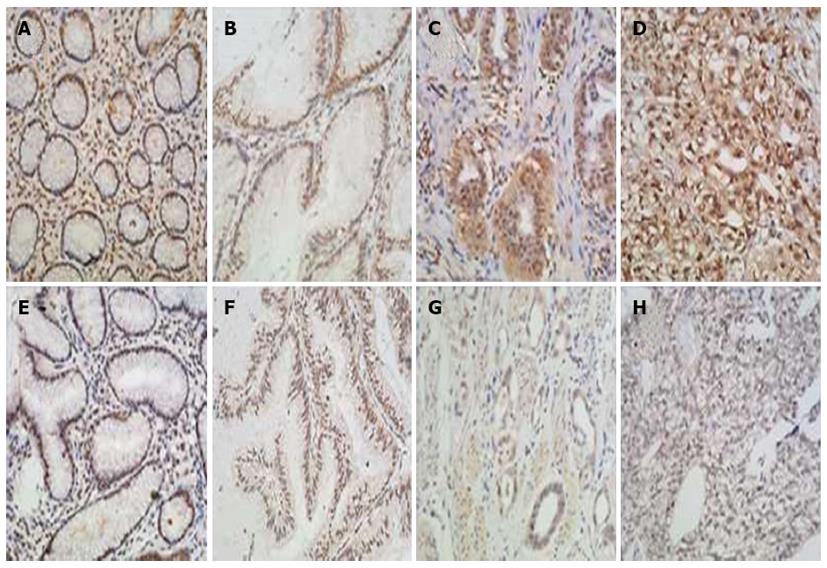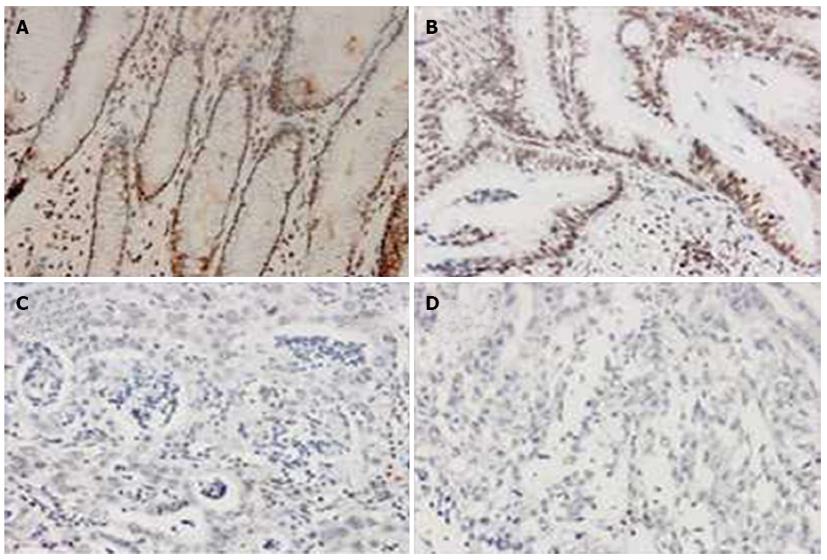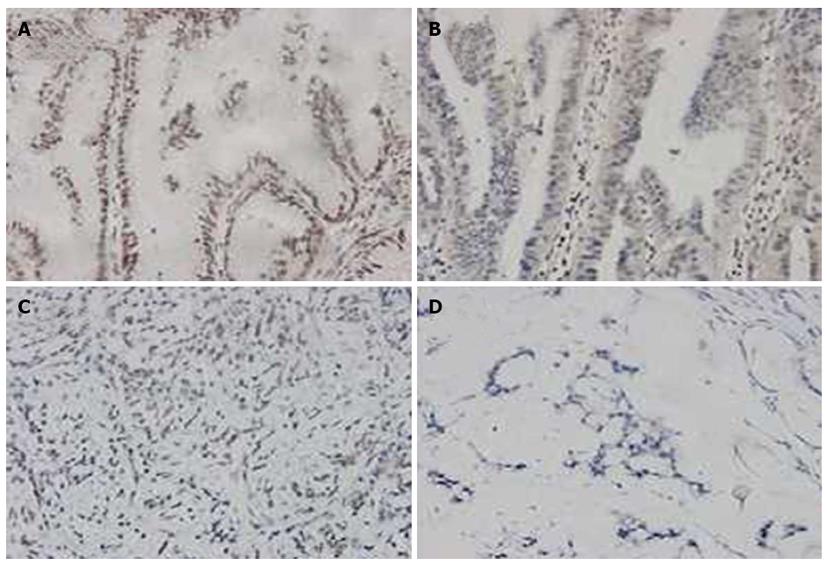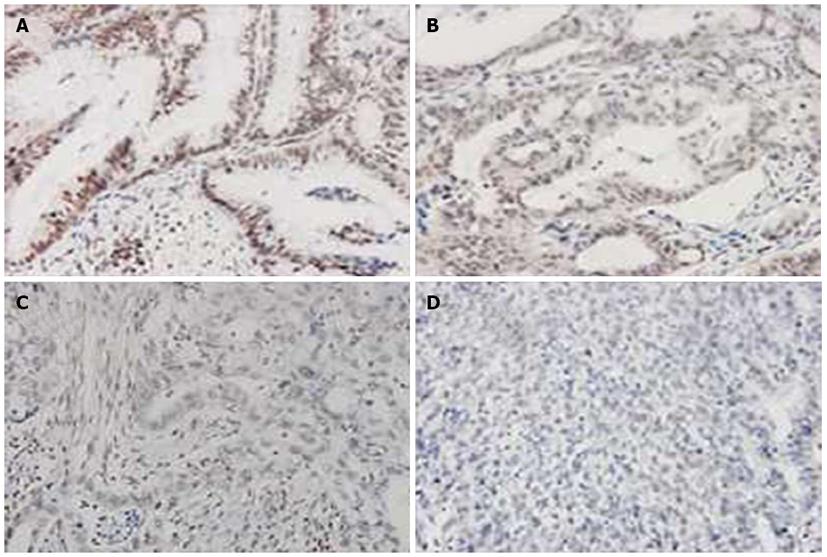Copyright
©2013 Baishideng Publishing Group Co.
World J Gastroenterol. Nov 28, 2013; 19(44): 8099-8107
Published online Nov 28, 2013. doi: 10.3748/wjg.v19.i44.8099
Published online Nov 28, 2013. doi: 10.3748/wjg.v19.i44.8099
Figure 1 Immunohistochemical nuclear staining of H3K4-2me and H3K4-3me.
H3K4-2me (A-D) and H3K4-3me (E-H) in normal gastric mucosa (A, E), well-differentiated gastric cancer (GC) tumor (B, F), moderately-differentiated GC tumor (C, G), and poorly-differentiated GC tumor (D, H). Regardless of the GC differentiation status, H3K4-2me and H3K4-3me displayed high-level nuclear signals, as visualized by immunohistochemistry. Magnification: × 200.
Figure 2 Immunohistochemical detection of staining patterns of uH2B in gastric cancer at various stages of differentiation.
A: Normal gastric mucosa shows high-level staining (brown); B: Well-differentiated gastric cancer (GC) shows high-level staining; C: Moderately-differentiated GC shows low-level staining; D: Poorly-differentiated GC shows negative staining. Magnification: × 200.
Figure 3 Level of nuclear staining of uH2B according to Lauren classification of tumor type.
A, B: Intestinal-type tumors showing (A) high-level staining (brown) of well-differentiated tumors and (B) fewer uH2B+ cells and moderate staining (yellow) of moderately-differentiated tumors; C, D: Diffuse-type tumors showing (C) low-level staining (light yellow) and few uH2B+ cells of poorly-differentiated tumors and (D) negative staining in poorly-differentiated tumors. Magnification: × 200.
Figure 4 Immunohistochemical detection of uH2B staining at different TNM stages.
A: Stage I (well-differentiated) gastric cancer (GC) tumor shows high-level staining; B: Stage II (moderately-differentiated) GC tumor shows fewer uH2B+ cells and moderate staining (yellow); C: Stage III (poorly-differentiated) GC tumor shows few uH2B+ cells and low-level staining; D: Stage IV (dedifferentiated) GC tumor shows no UH2B+ cells and negative staining. Magnification: × 200.
Figure 5 Kaplan-Meier curves of cancer-specific survival for gastric cancer patients based on uH2B+ and uH2B- status, as detected by immunohistochemistry.
The 5-year survival rate of patients with positive uH2B staining (n = 130) was significantly higher than that of patients with negative uH2B staining (n = 23).
- Citation: Wang ZJ, Yang JL, Wang YP, Lou JY, Chen J, Liu C, Guo LD. Decreased histone H2B monoubiquitination in malignant gastric carcinoma. World J Gastroenterol 2013; 19(44): 8099-8107
- URL: https://www.wjgnet.com/1007-9327/full/v19/i44/8099.htm
- DOI: https://dx.doi.org/10.3748/wjg.v19.i44.8099













